AI Content Optimization – Content Refresh Ideas for Writers
Improve your content with Rank Revival's powerful AI-driven tools
In this article and video, we'll walk you through Rank Revival's AI content optimization audits and how you can use them to improve your website content.
Each audit is designed to save your writers and editors time, not replace them Our AI audits are trained to look for improvement opportunities the same way a human would, uncovering potential improvements in minutes instead of spending so much of their time on manual research.
To start, login with your Google search console account, select your site, and click a URL you'd like to optimize. Right now, we have a helpful content audit, a competition audit, and an Information Gain audit. These are a major feature of Rank Revival's Always-on Content Audit fuctionality.
Features Covered
- Helpful Content Audit
- Competitive Page Gap Analysis
- Information Gain Improvements
What is AI Content Optimization?
AI Content Optimization is the process of using artificial intelligence and machine learning algorithms to enhance website content for increased content depth and engagement. This technology can analyze the existing content on your webpage and provide recommendations on how you can improve content quality, and provide information on what your existing content might be missing.
Navigating the Dashboard
Selecting a Site
After logging in you'll be presented with the list if sites you have verified within your Google search console. Choose your desired site from this list to load the Content Decay Dashboard. If you've previously added sites, they will appear under "existing sites."
Content Decay Dashboard
Once the dashboard loads, you'll see a list of URLs available, you can run an AI audit on any page on your website. Follow these steps to perform an audit:
- Click on the URL of the article you wish to audit.
-
Choose one of the three AI content optimization options:
- Helpful Content Audit
- Competition Audit
- Information Gain Audit
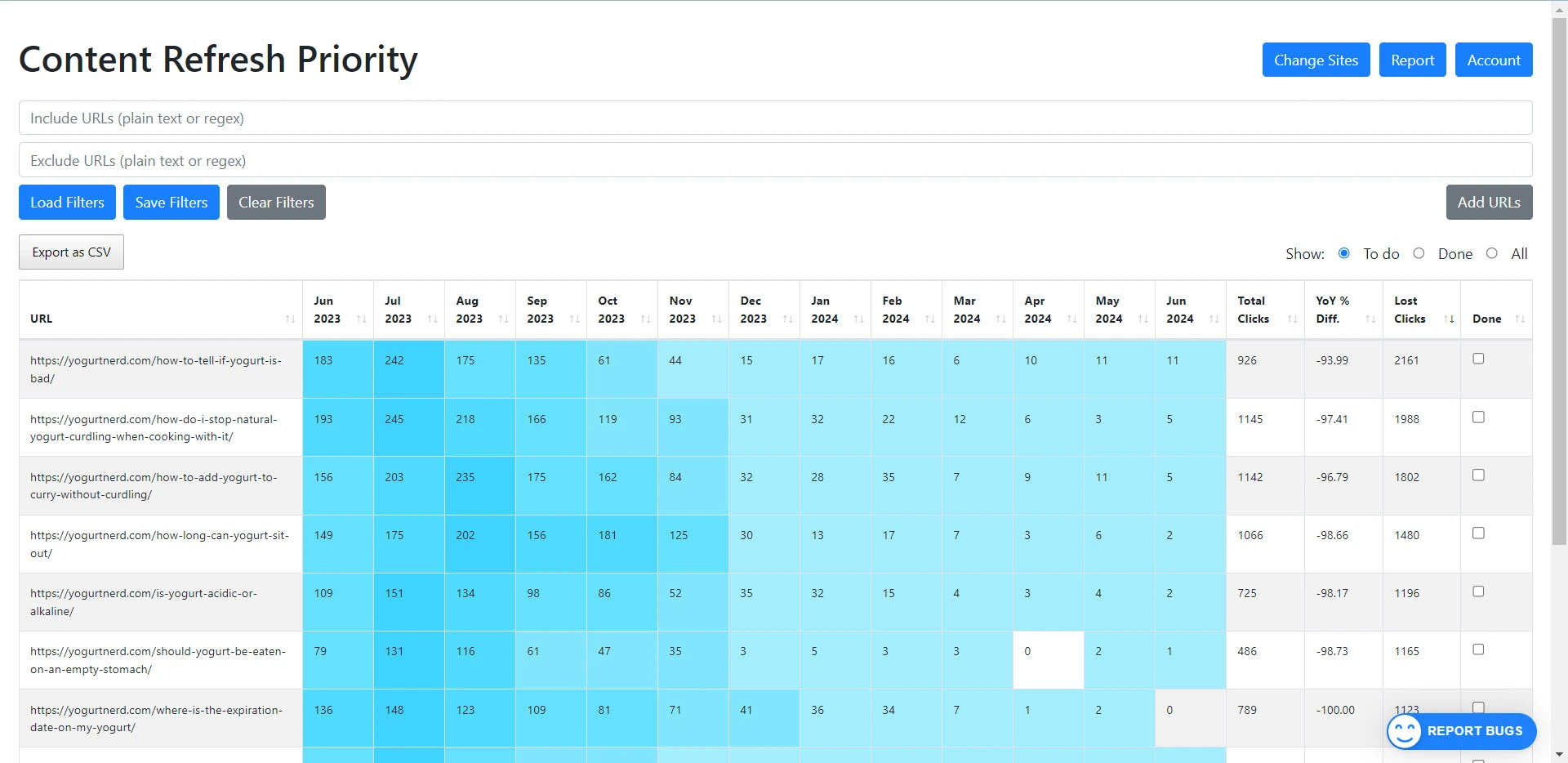
Our AI Content Optimization Types
Rank Revival offers three AI content optimization options:
- Helpful Content Audit: This audit assesses your content against 28 specific questions designed by Google. It checks for originality, comprehensive descriptions, stylistic errors, and more. It highlights both strengths and areas for improvement.
- Competition Audit: For this audit, you'll need to input a relevant keyword. The system fetches current search results and allows you to select the three most relevant competitor articles. It then provides a comparative analysis, summarizing the strengths of competitors' content and suggesting what you could add or improve.
- Information Gain Audit: The information gain audit looks at your existing content, and uncovers missing aspects that you could add to improve it such as citations, statistics, tables of data and more. Improving trustworthiness by adding useful data is a major part of this audit.
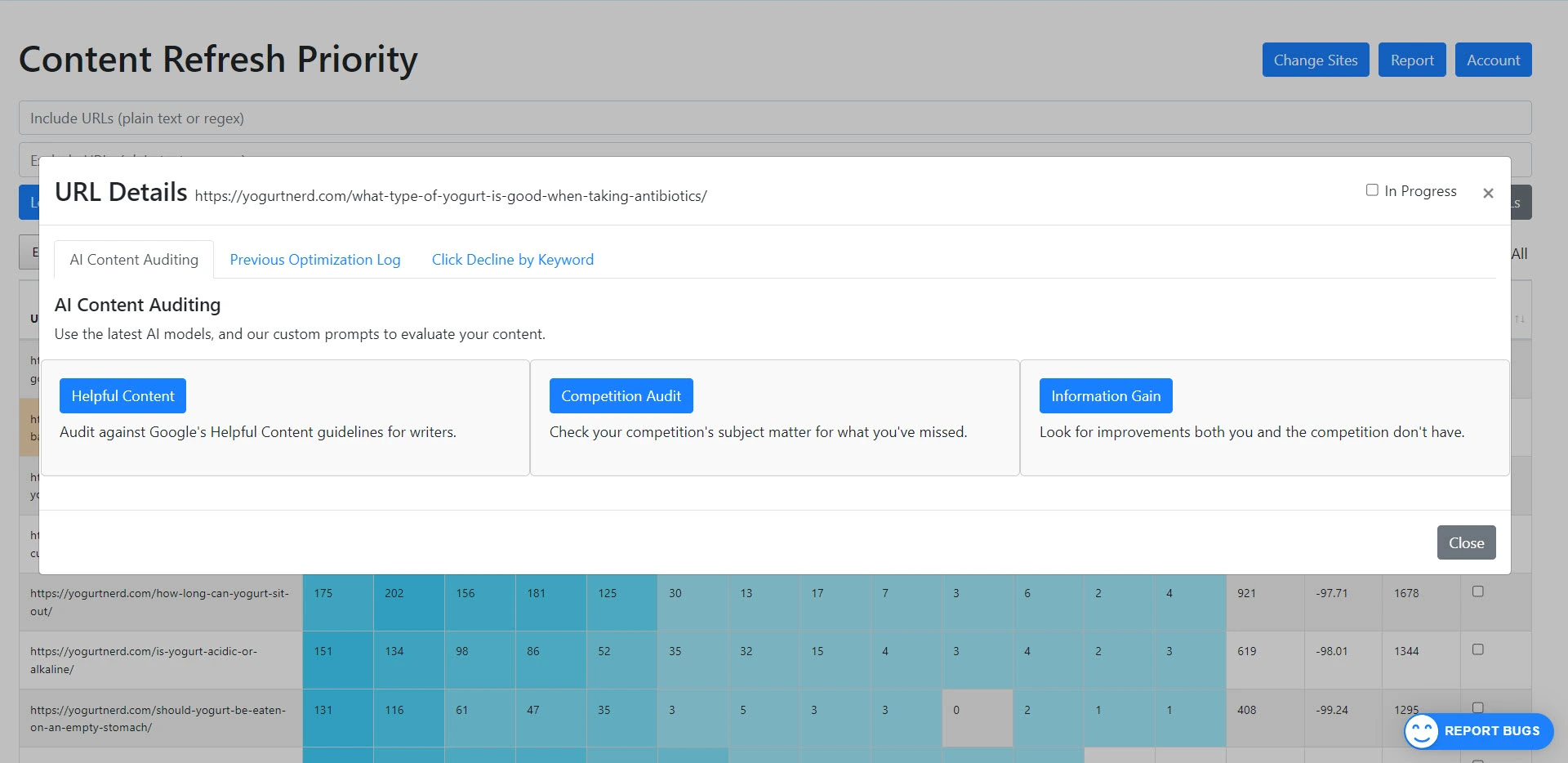
Helpful Content Audit
Starting the Audit
- Log in: Sign in to Rank Revival with Google Search Console.
- Choose your site: Select an existing site from your dashboard.
- Select a URL: Click on the specific article you want to audit.
- Helpful Content Audit: Choose the helpful content audit option and click "Go."
- Analyze Content: Confirm that your content is loaded correctly and start the analysis.
Interpreting the Results
- Passing Criteria: Check if your content passes the 28 questions posed by Google.
-
Audit Includes:
- Original information
- Comprehensive coverage
- Author's expertise
- Relevance and focus
- Failed Criteria: Identify areas where your content does not pass (e.g., missing author bio).
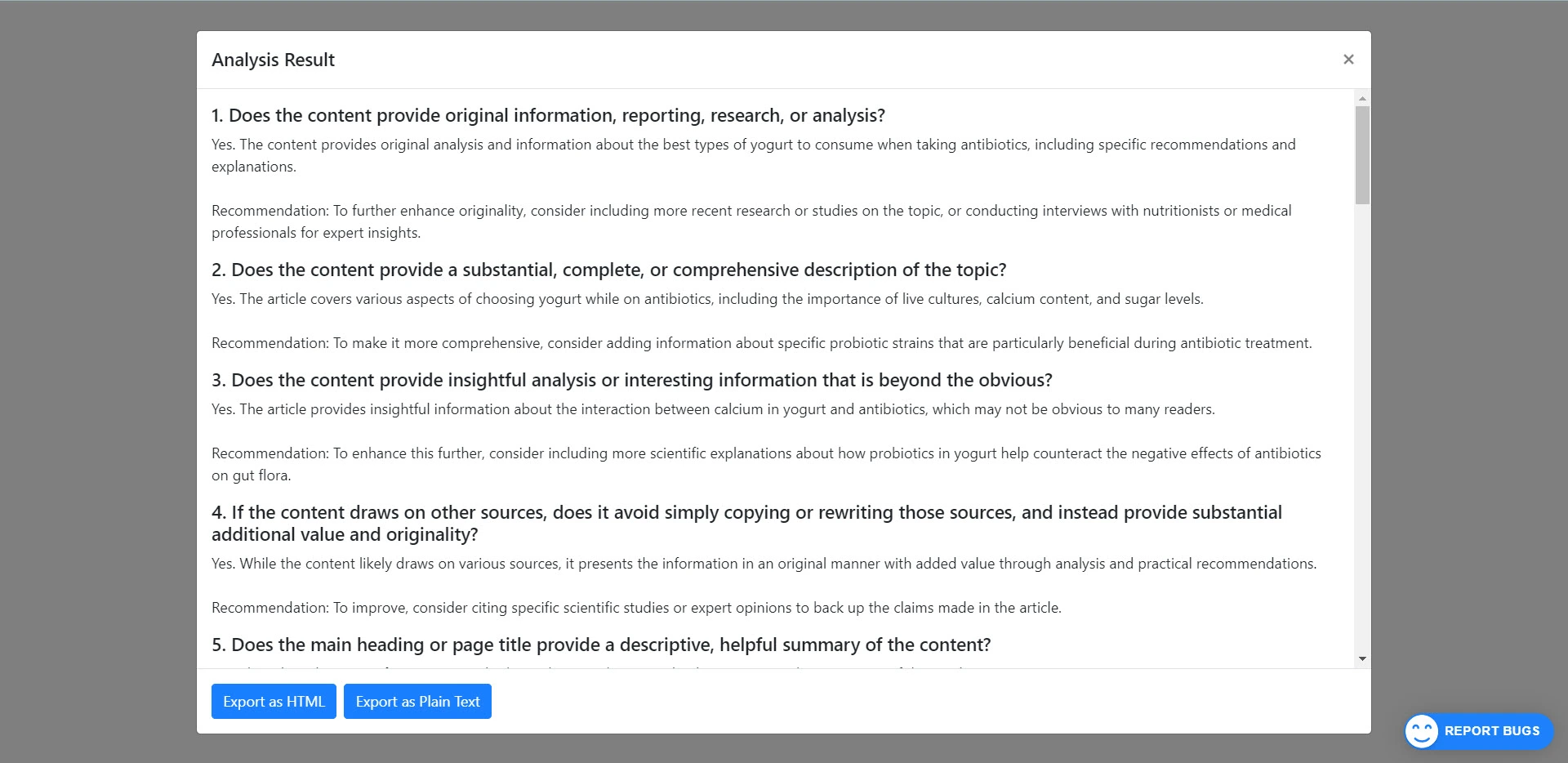
Helpful Content Improvements
Author Bio Improvement:
One or the components of the helpful content audit is ensuring that the author has expertise in the subject. Google calls this EEAT (Experience, Expertise, Authoritativeness, and Trustworthiness). Improving the author information can help give Google, and the users more information about why they should trust the author.
- Ensure a detailed author bio is present.
- Include links providing more information about the author's background.
Other Enhancements:
- Focus on gaps highlighted in the audit.
- Ensure content is not mass produced and stays relevant.
- Address any suggestions made for further improvements
Many of the aspects of the helpful content audit work sitewide, such as improving the author bio, and writing specifically for users (not search engines)
Competitor Audit
Selection of Relevant Keyword
When starting with the competitive content analysis, selecting the right keywords is crucial. Use the decline by keyword feature to find keywords that have experienced a drop in clicks. For instance, if analyzing an article about stopping yogurt from curdling, relevant keywords might include:
- stop yogurt curdling
- how to stop yogurt curdling
- how to stop yogurt from curdling
Copy the most relevant keyword and proceed to the next steps.
Identifying Competitor Articles
After selecting the keyword, you will need to identify competitor articles. Input the keyword into the system to get the current search results. Be selective and choose the three most relevant articles:
- Avoid forums and community question sites like Reddit and Quora.
- Look for articles that directly address the keyword topic.
- Open and review the articles to ensure their relevance.
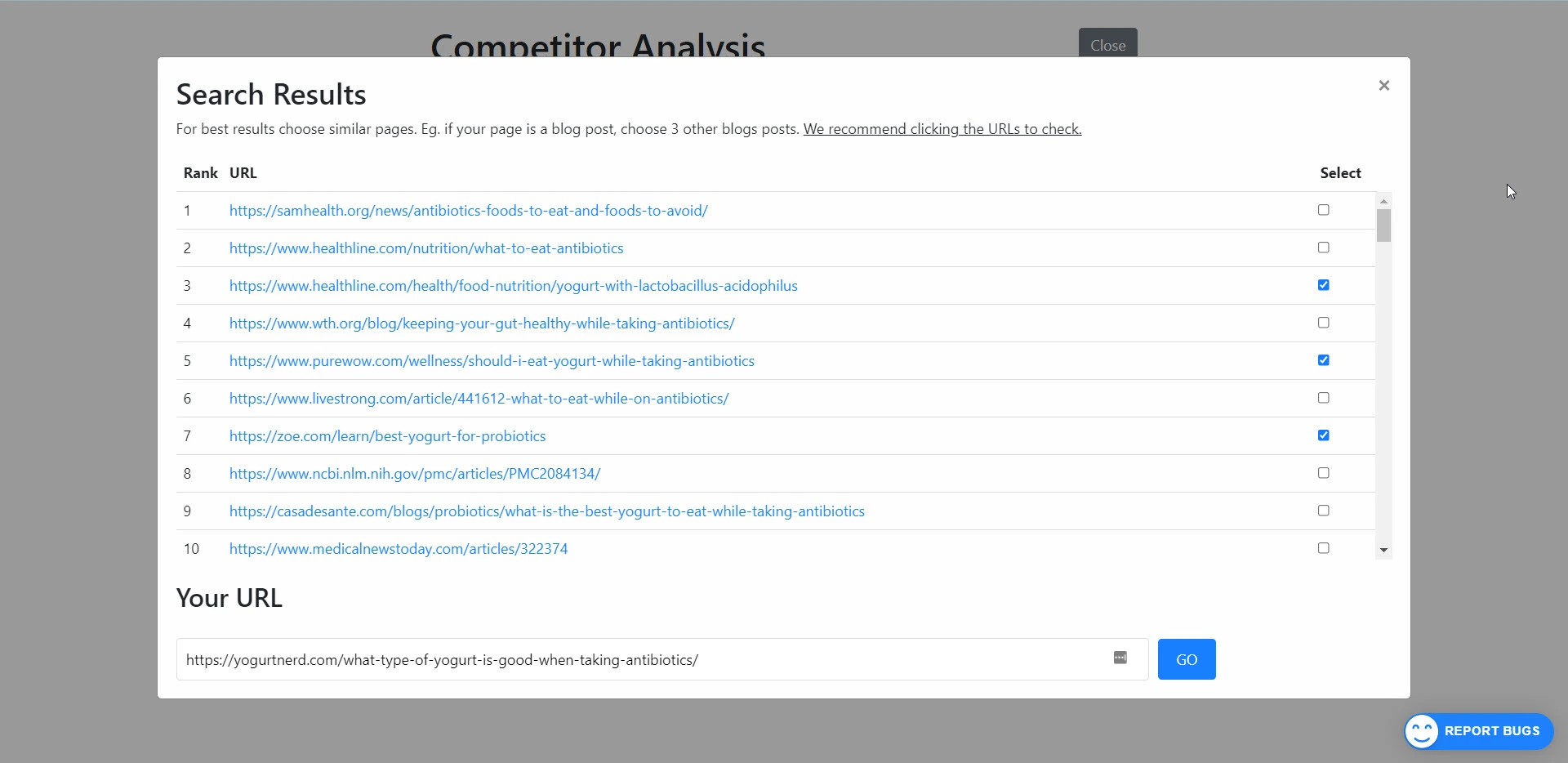
Analyzing Competitor Content
Once you have your competitor articles identified, proceed with the analysis. The tool will fetch and compare the content of these articles against yours. This will include:
- A summary of each competitor article.
- Identification of what your article lacks that competitors have.
- Recommendations on content you might consider adding.
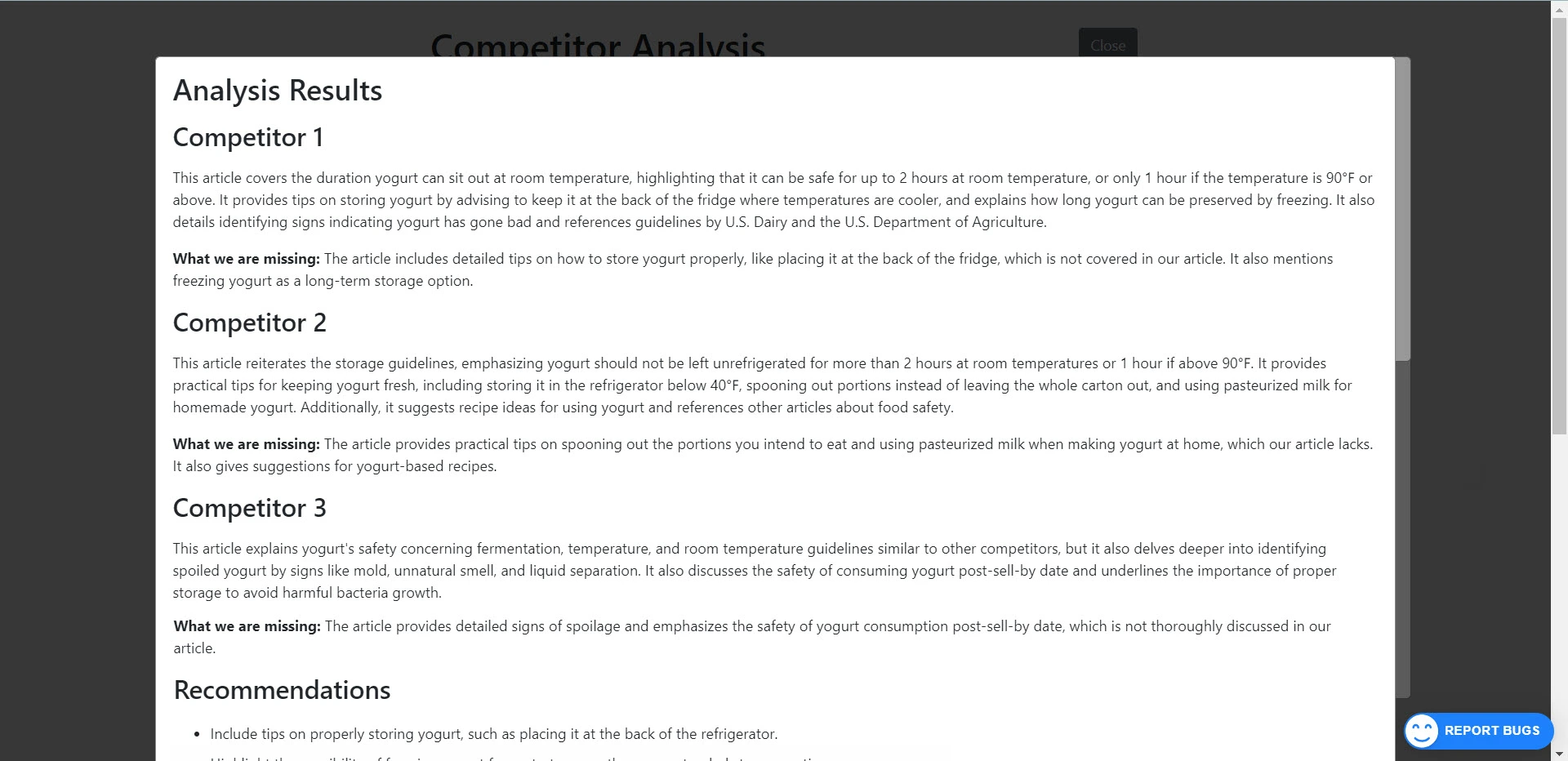
Use the provided recommendations to improve the comprehensiveness and relevance of your article, making it competitive against the top-ranking competitor articles.
Information Gain Audit
Starting the Audit
- Select a URL: Click on the specific article you want to audit.
- Information Gain Audit: Choose the Information gain option and click "Go."
- Analyze Content: Confirm that your content is loaded correctly and start the analysis.
Interpreting Results
- Enhancements: The information gain audit looks at your content and looks for additional information and useful data you could add for the user.
- Audit Includes:
- Statistics Addition
- Table of Data
- Quotation Addition
- Adding Citations
- Improving Fluency and Uniqueness
- Adding Missing Content
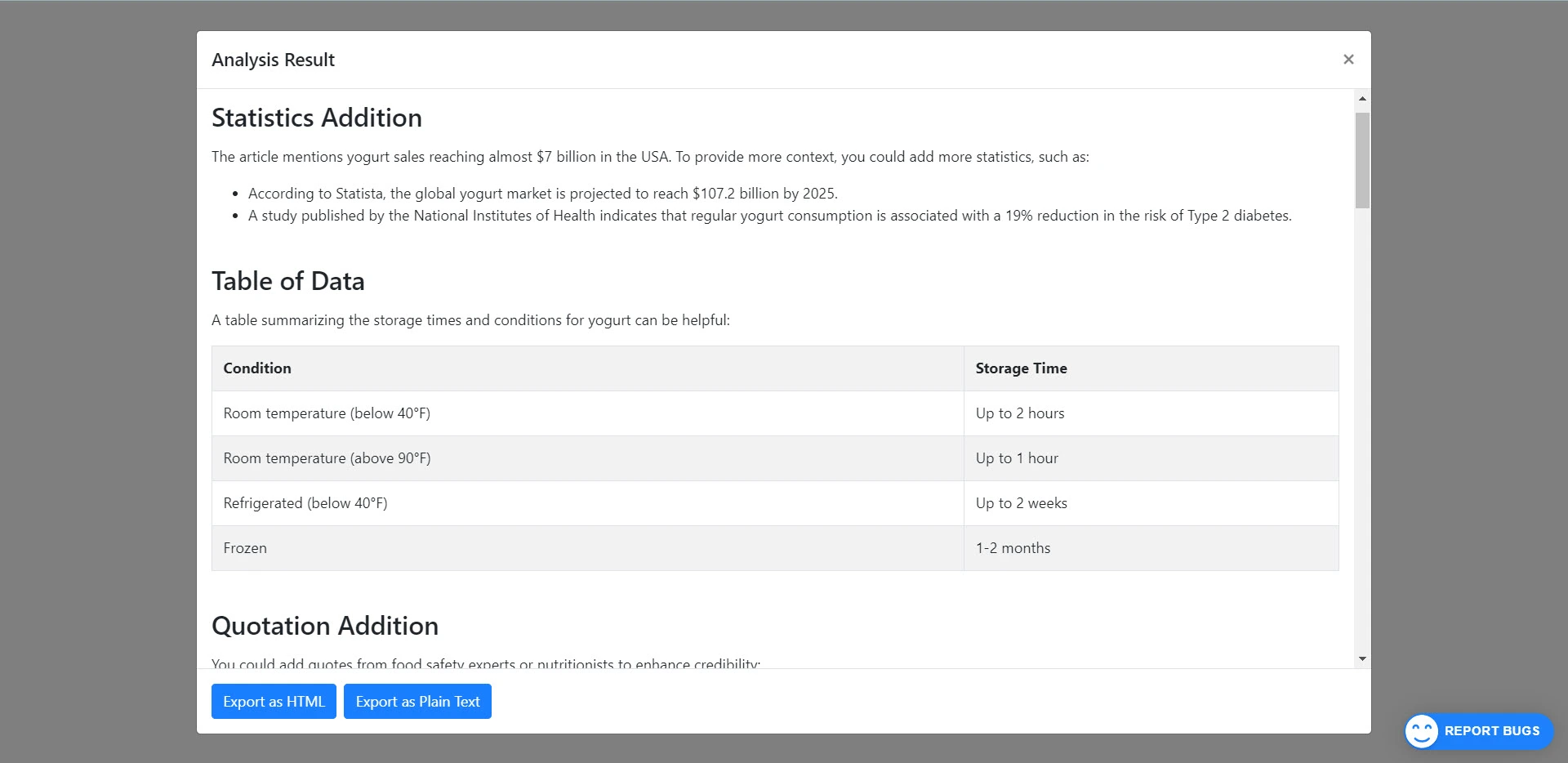
Info Gain Strategies
The purpose behind the information gain audit is uncovering additional aspects you could add to your content that would be useful to the reader, and adds trust in your content.
Adding hard data such as statistics, quotations and tables of data helps increase trust on your content and also gives you several opportunities to show in Google's features snippets and to be displayed across AI based search results, such as SearchGPT.
- Information gain is about adding additional insights to your content.
- Citations, statistics and other data points increase trust with users and search engines.
Additional Notes:
- Use the Info Gain audit to uncover content features you are missing.
- Verify the suggestions, especially citations and statistics, edit and improve them.
- Remember these are suggestions, use what works for you and your content.
Information Gain is about adding unique and valuable insights that other websites don't have in their content. You can go the extra mile by running a poll on X or LinkedIn, or asking an expert for a quotation. Use the info gain report to get ideas, and for the best results use those ideas to get your own unique and valuable data.
By following these recommendations and using our AI content optimization tools, you can improve your content, making it more informative and competitive in search rankings.